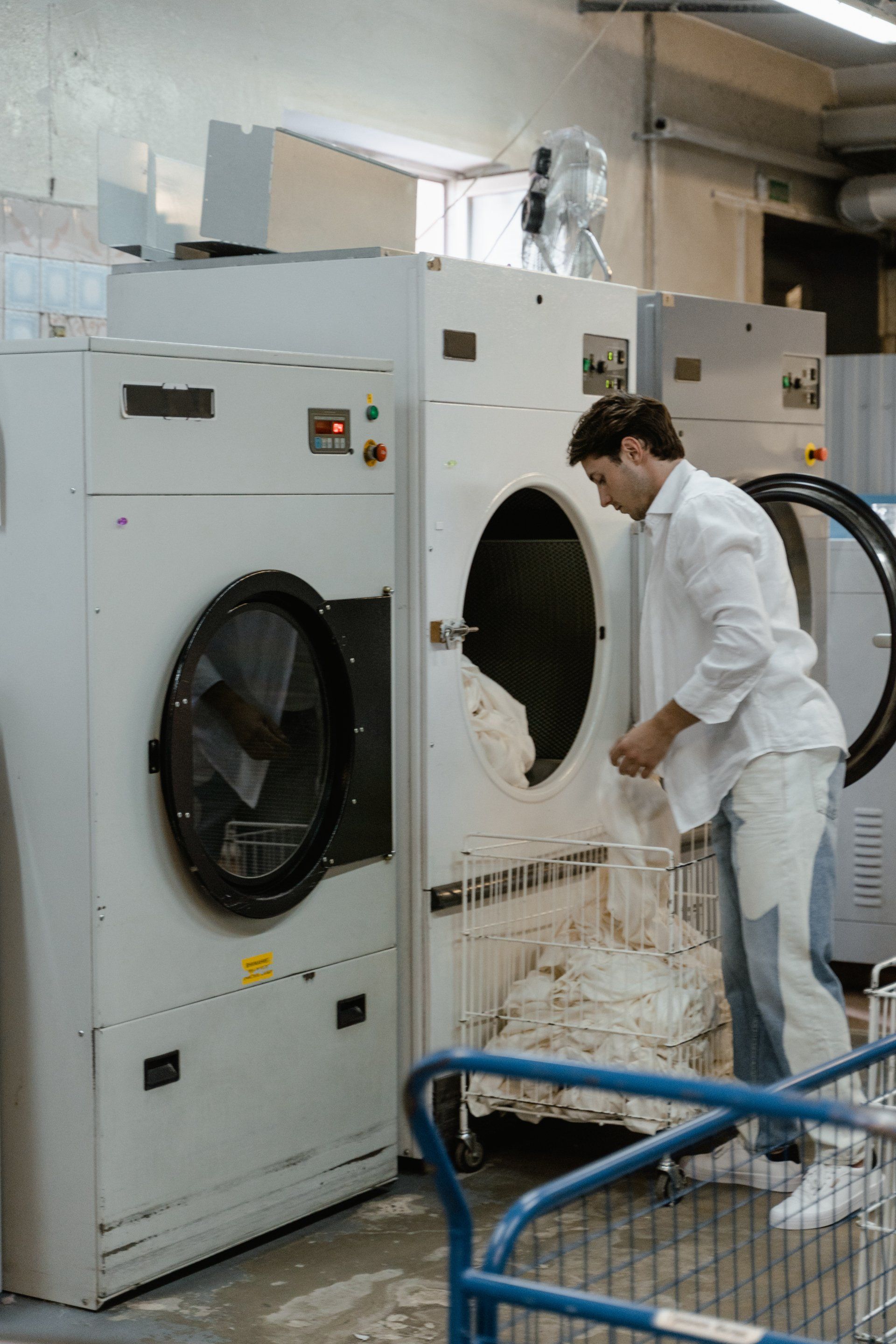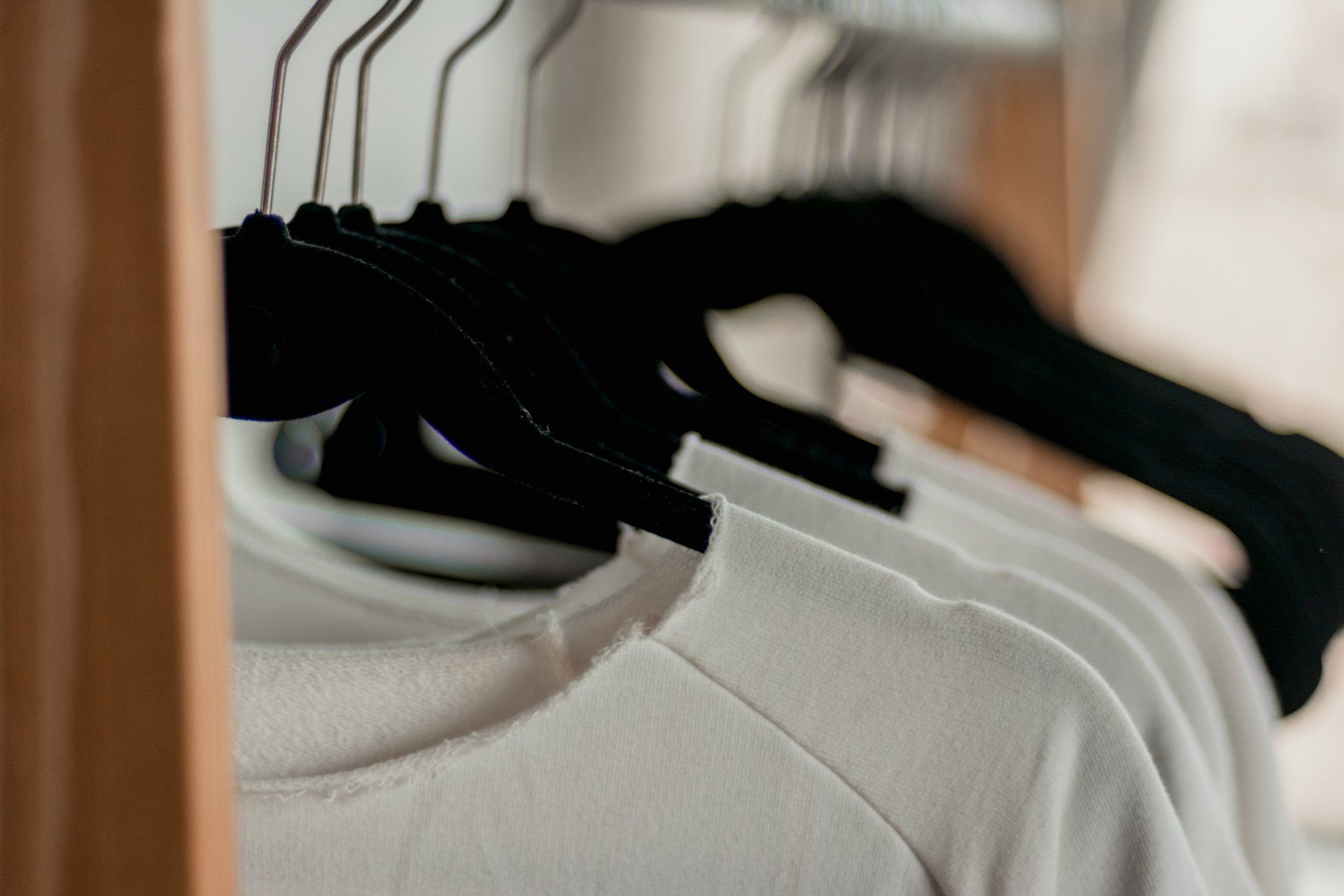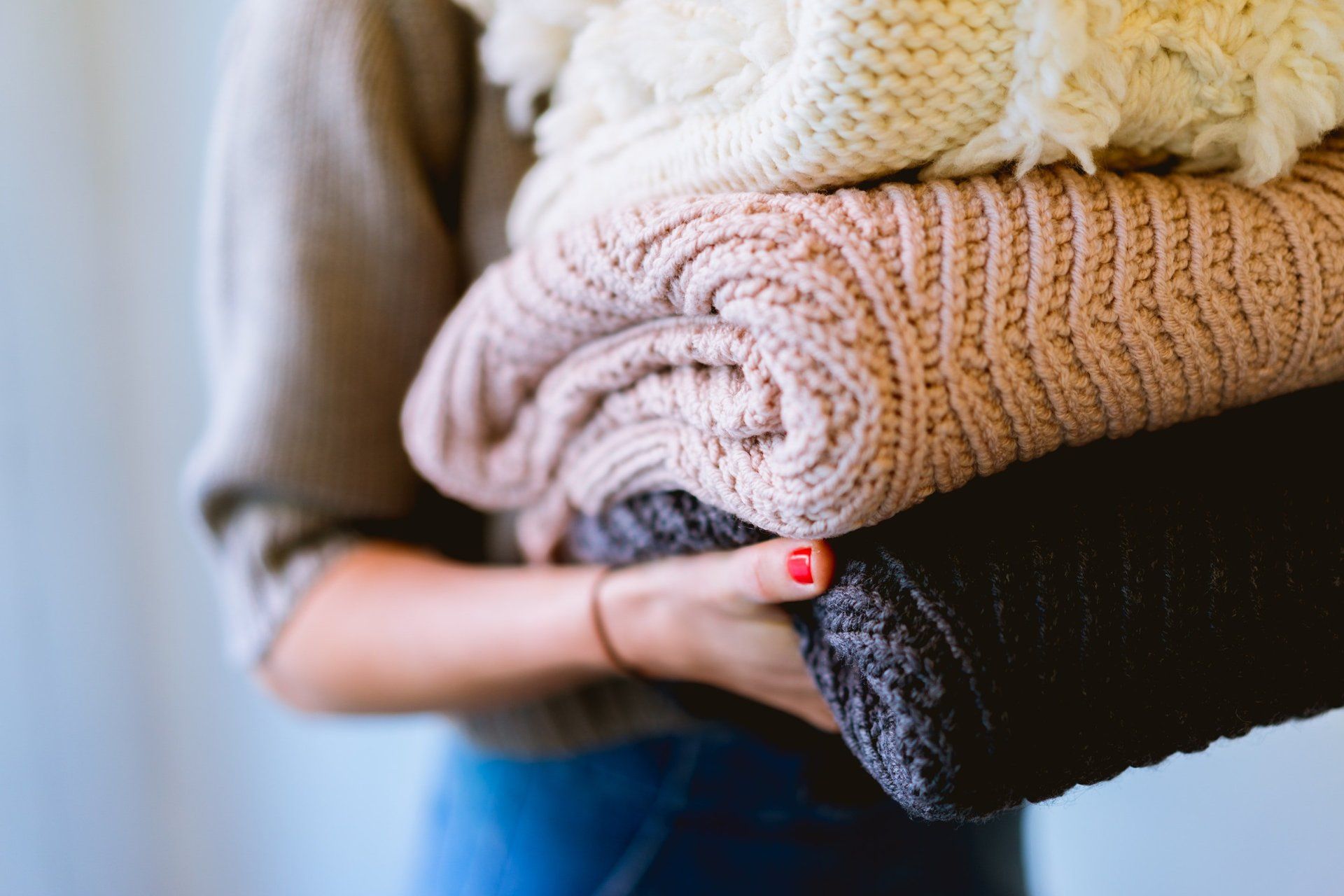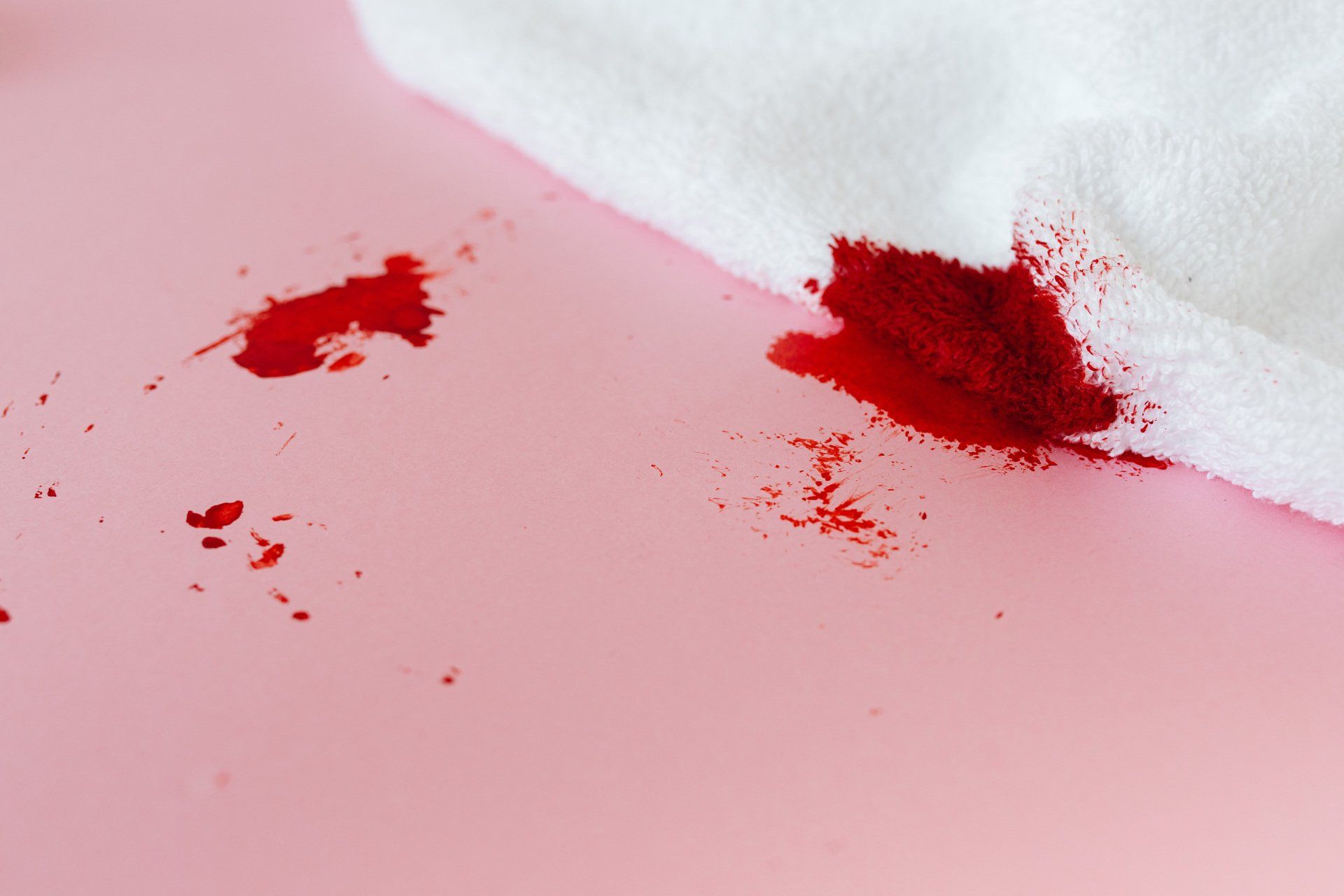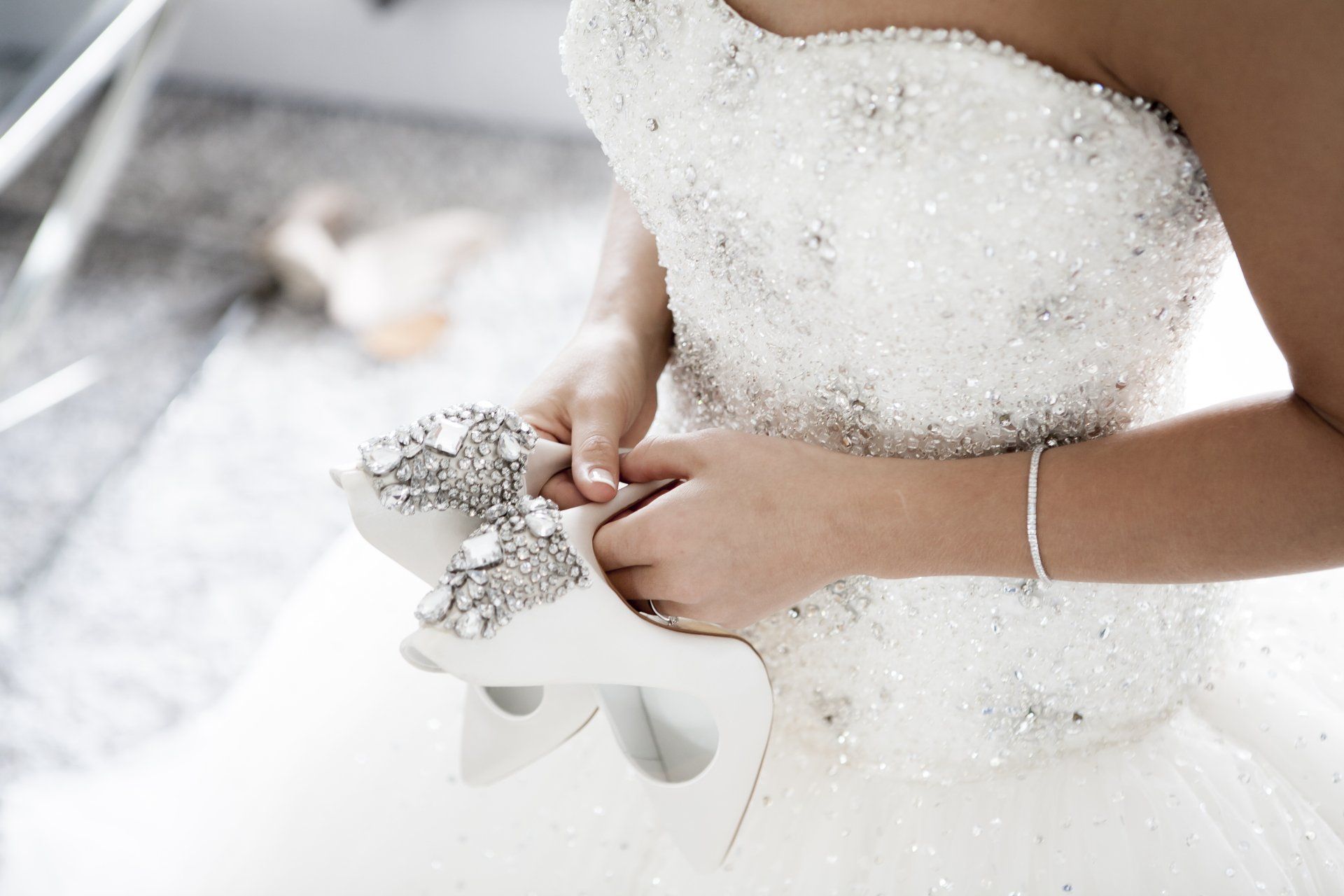How To Remove Stains from a Curtain Lining?
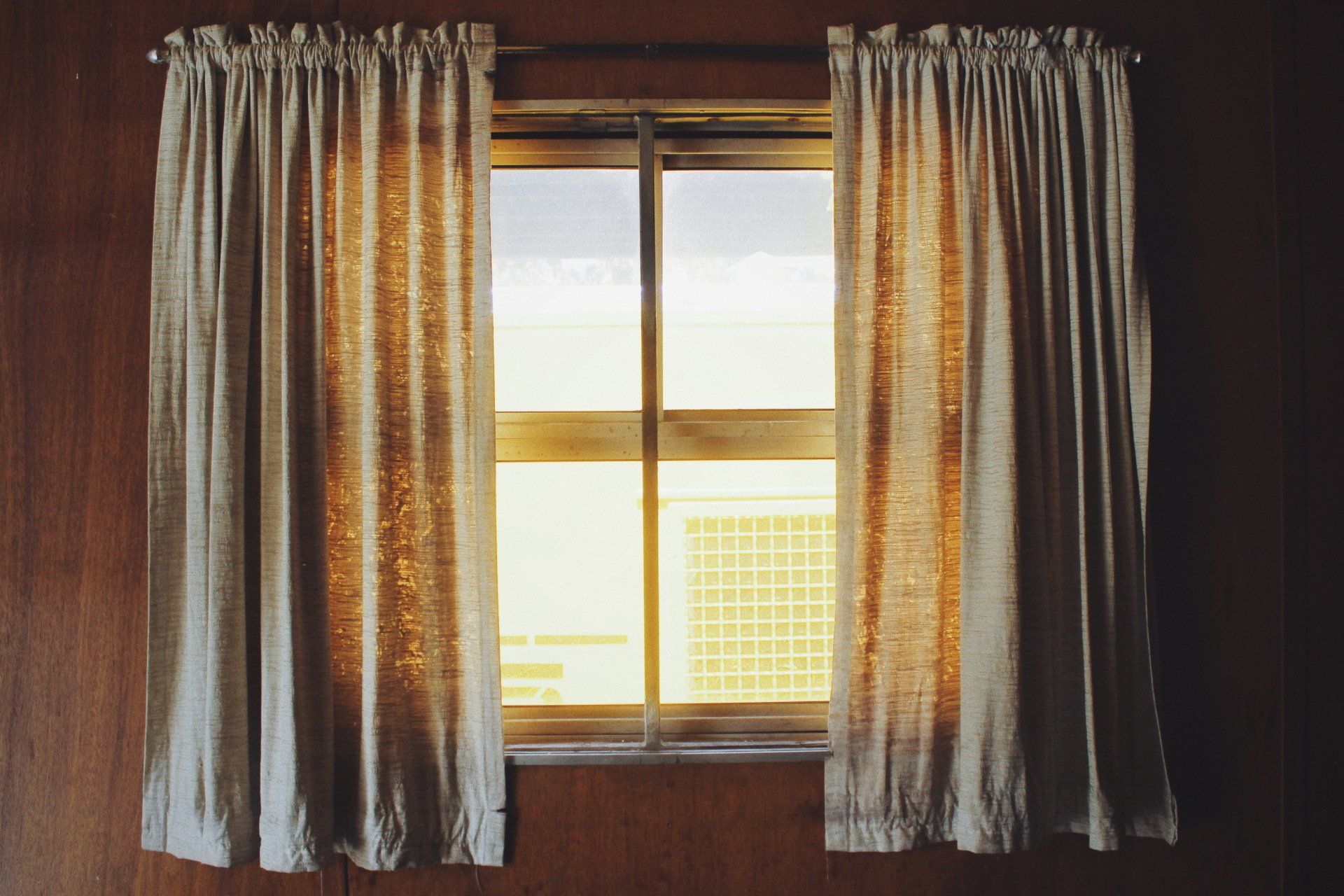
Curtain linings can easily become stained due to various factors, ranging from accidental spills to everyday dirt and dust. If left untreated, these stains can detract from the overall appearance of your curtains. Therefore, it is important to know how to effectively remove stains from curtain linings.
First, it is essential to understand what causes stains on curtain linings. This can include common culprits such as food and beverage spills, dirt and dust accumulation, grease marks, ink stains, rust, and even mould and mildew. By identifying the cause of the stain, you can determine the best method for removal and ensure that your curtain linings remain fresh and clean.
Proper preparation before stain removal is also crucial, which involves gathering the necessary supplies and determining the appropriate cleaning technique.
What Causes Stains on Curtain Lining?
Stains on curtain lining can be caused by dirt, dust particles, spills, and splashes from liquids. Exposure to sunlight can also cause discolouration and fading. Regular curtain cleaning and maintenance can prevent stains from becoming permanent.
Vacuuming and dusting can remove dirt and dust particles. Spills and stains should be promptly treated using appropriate cleaning methods and products. Using curtain lining treatments or UV-blocking curtains can minimise the effects of sunlight and prolong the lifespan of the curtain lining. Natural remedies have been replaced by specialised stain removers and cleaning products for curtain linings.
Preparation before Stain Removal
Before diving into the process of removing stains from curtain lining, it is important to properly prepare for the task at hand. In this section, we will discuss the crucial steps you need to take before tackling any stains on your curtain lining. From gathering the necessary supplies to ensuring a clean work environment, we will equip you with the knowledge and tools to effectively remove those unsightly stains. So, let's get ready and transform your curtains back to their pristine condition!
Gather the Necessary Supplies
When preparing to remove stains from curtain lining, it is important to gather all of the necessary supplies. First, you will need a gentle detergent that is suitable for delicate fabrics. This will ensure that you do not cause any damage to the curtains while removing the stains. Additionally, vinegar is an effective ingredient for removing various types of stains and odours, so it is also essential to have it on hand. Water will be used to dilute both the detergent and vinegar solutions, so make sure to have a sufficient amount available.
To tackle stubborn stains and odours, baking soda is an excellent option. It is known for its ability to remove tough stains and unpleasant odours. Another useful item to have is oxygen bleach, which is safe to use on most types of fabric. This will further help in eliminating any remaining stains or odours.
When applying the cleaning solutions, it is important to use soft cloths to gently blot the stains. This will avoid any additional damage to the fabric. A soft brush or sponge can also be used to scrub and agitate the stains without causing harm. Make sure to have these items available for an effective cleaning process.
In order to mix the cleaning solutions, you will need a bucket or basin. This will provide a suitable container for combining the necessary ingredients. It is always beneficial to have a stain removal chart or guide on hand. This will help you to consult specific stain removal techniques and ensure that you are using the appropriate methods for each type of stain.
If you are unsure about which products to use or how to remove a particular stain, it is always advisable to seek advice from a professional cleaner or the curtain manufacturer. It is essential to test the cleaning solutions on a small, hidden area before applying them to the entire curtain. This will help prevent any potential damage or discolouration.
With the right supplies and techniques, you can effectively remove stains from the curtain lining and maintain their fresh and clean appearance.
Common Methods for Removing Stains from Curtain Lining
Looking to banish those stubborn stains from your curtain lining? Look no further! We've got you covered with a range of effective methods. In this section, we'll explore the common approaches to removing stains from curtain lining. From spot cleaning with mild detergent to tackling tough stains with vinegar and water solution, applying baking soda paste, and harnessing the power of oxygen bleach, we'll share valuable insights and tips to ensure your curtain lining remains pristine and stain-free. Say goodbye to unwanted marks and hello to refreshed curtains!
1. Spot Cleaning with Mild Detergent
To spot clean curtain lining with a mild detergent, please follow these steps:
- Prepare a mixture of mild detergent and warm water. Use a ratio of 1 tablespoon of detergent to 2 cups of water.
- Take a clean white cloth or sponge and dip it into the detergent mixture. Squeeze out any excess liquid.
- Dab the stained area of the curtain lining gently with the damp cloth or sponge. Avoid rubbing, as it may spread the stain or damage the fabric.
- Continue dabbing on the stain until it starts to lift. Be patient and avoid applying too much pressure, as it may harm the fabric.
- Once the stain is gone or significantly reduced, dampen a clean cloth with plain water and gently blot the area to remove any remaining detergent residues.
- Allow the curtain lining to air dry completely before reinstalling it.
Remember to test the mild detergent mixture on a small and inconspicuous area of the curtain lining before applying it to the stained area. This is to ensure that the detergent does not cause any discoloration or damage to the fabric. Act promptly and treat stains as soon as they happen to increase the likelihood of successful removal.
2. Using Vinegar and Water Solution
Using a vinegar and water solution is a safe and natural way to remove stains from curtain lining. Here is a step-by-step guide to using this solution:
- Mix equal parts of white vinegar and water in a spray bottle to prepare the vinegar and water solution.
- Test the vinegar and water solution on a small, inconspicuous area of the curtain lining to ensure no damage or discolouration.
- If the test area is unaffected, spray the vinegar and water solution directly onto the stained area.
- Gently blot the stained area with a clean cloth or sponge to break down the stain.
- Let the vinegar and water solution sit on the stain for a few minutes to penetrate and loosen it.
- Use a clean cloth or sponge to gently scrub the stained area in a circular motion.
- Rinse the area with clean water to remove any remaining vinegar and water solution and stain.
- Absorb excess moisture by blotting the area with a dry towel or cloth.
- Repeat the process if necessary until the stain is completely removed.
- Allow the curtain lining to air dry before rehanging it.
Using a vinegar and water solution effectively removes stains from curtain lining. Always follow the care instructions for your specific curtain fabric and test cleaning solutions on a small area before applying to the entire stain.
3. Applying Baking Soda Paste
To effectively eliminate stains from your curtain lining, you can follow these steps on how to apply a baking soda paste:
- Start by creating a paste using equal amounts of baking soda and water.
- Apply the baking soda paste onto the stained areas of the curtain lining.
- Gently rub the paste into the stains using circular motions, using a soft brush or sponge.
- Let the baking soda paste sit on the stains for 15-20 minutes, allowing it to penetrate and dissolve the marks.
- Dampen a clean cloth with water and use it to remove the baking soda paste from the curtain lining.
- Rinse the cloth and wipe the curtain lining again to ensure there is no residue left behind.
- Check the stained areas to confirm if the marks have been completely removed. If not, repeat the process.
- Thoroughly rinse the curtain lining with clean water to ensure all traces of the baking soda paste are removed.
- Let the curtain lining air dry completely before reinstalling it.
By following these instructions and applying the baking soda paste, you can effectively remove marks from your curtain lining.
4. Removing Stains with Oxygen Bleach
To effectively remove stains from curtain lining using oxygen bleach, please follow these steps:
- Start by preparing a solution of oxygen bleach and warm water. Simply mix one scoop of oxygen bleach with a gallon of water.
- Once the solution is ready, dip a clean cloth or sponge into it. Make sure to wring out any excess liquid before gently blotting the stained area.
- Allow the oxygen bleach solution to sit on the stain for approximately 10-15 minutes. This will help break down and lift the stubborn stain.
- Next, thoroughly rinse the curtain lining with clean water. This will ensure that any remaining residue is completely removed.
- After rinsing, carefully check the stained area to ensure that the stain is completely gone. If necessary, repeat the previous steps until the stain is completely eliminated.
- Once the cleaning process is complete, squeeze out any excess water from the curtain lining. Then, hang it in a well-ventilated area to dry.
To ensure successful stain removal with oxygen bleach, it is important to consider the following precautions:
- Always wear gloves to protect your hands while working with oxygen bleach.
- Prior to applying the solution to the stain, test it on a small and inconspicuous area of the curtain lining.
- Follow the instructions provided on the oxygen bleach product for proper usage and dilution ratios.
- Store oxygen bleach in a cool, dry place away from the reach of children and pets.
By adhering to these steps and precautions, you can effectively remove stains from your curtain lining using oxygen bleach.
Specialised Stain Removal Techniques
Discover specialised stain removal techniques that will rescue your curtain lining from the toughest stains. From grease and ink stains to rust and mold, this section unveils effective strategies to restore the pristine look of your curtains. Say goodbye to unsightly marks and hello to a fresh, clean appearance. Get ready to tackle each stain head-on and bid farewell to stubborn blemishes that refuse to budge. Let's dive into the world of expert stain removal methods and reclaim the beauty of your curtain lining.
1. Grease Stains
When it comes to removing grease stains from curtain lining, you can try the following methods:
- Spot Cleaning with Washing-up Liquid: Mix washing-up liquid with warm water. Dab the solution onto the grease stain using a clean cloth and gently rub in circular motions. Rinse with cold water and blot dry.
- Using Cornflour: Sprinkle cornflour directly onto the grease stain and let it sit for 30 minutes. The cornflour will absorb the grease. Brush off the cornflour with a clean brush or cloth, then vacuum or launder the curtain lining as usual.
- Applying a Degreaser: Apply a commercial degreaser directly onto the grease stain and let it penetrate the fabric for a few minutes. Blot the stain with a clean cloth, then rinse with water and air-dry.
Always test any cleaning method on a small, inconspicuous area of the curtain lining before treating the entire stain.
2. Ink Stains
Removing ink stains from curtain lining can be a challenging task, but it can be accomplished effectively with the appropriate techniques. Here are the steps to eliminate ink stains from curtain lining:
- Blot the stain with a clean cloth to remove excess ink.
- Use rubbing alcohol or isopropyl alcohol on a cloth or cotton ball. Gently dab the ink stains from the outer edges towards the centre to avoid spreading.
- Rinse the area with cold water to remove any traces of alcohol.
- If the ink stains persist, mix warm water and dishwashing detergent (1 part detergent to 2 parts water). Apply the solution to the ink stains and gently blot. Rinse with cold water afterwards.
- Use a stain remover specifically designed for ink stains to treat any remaining ink stains. Follow the instructions provided on the product label.
- Clean the curtain lining according to the care instructions mentioned on the label.
By following these steps, you can effectively remove ink stains from curtain linings. Remember to test any cleaning solutions on a small, inconspicuous area of the lining before applying them directly to the ink stains.
3. Rust Stains
Rust stains can be a difficult challenge to remove from curtain lining. To effectively eradicate them, follow the instructions provided below:
- In a bowl, create a mixture of lemon juice and salt by combining equal parts.
- Gently rub the solution directly onto the rust stain, ensuring to incorporate the mixture into the stain.
- Allow the solution to sit on the stain for about 30 minutes, facilitating the breakdown of the rust.
- Rinse the affected area with warm water to eliminate the solution and any residue.
- If the stain persists, repeat the steps mentioned above. It may be necessary to apply the solution multiple times.
- Once the stain has been completely eliminated, proceed to wash the curtain lining as per the care instructions.
By following these steps, you will effectively eliminate rust stains from your curtain lining. Before applying any cleaning solution to the stain, always perform a test on a small and inconspicuous area of the curtain lining to prevent any fabric damage.
4. Mold and Mildew Stains
To eliminate mould and mildew stains from curtain lining, please try the following effective methods:
- Vinegar solution: Combine equal amounts of white vinegar and water in a spray bottle. Spray the solution onto the stained area and let it sit for 15-20 minutes. Gently scrub the stain with a brush or sponge, then rinse with water.
- Bleach solution: Mix 1 part bleach with 3 parts water. Apply the solution to the mould or mildew stains and let it sit for 10-15 minutes. Scrub the area with a brush or sponge, then thoroughly rinse with water. Always use gloves and work in a well-ventilated area when using bleach.
- Hydrogen peroxide: Apply hydrogen peroxide directly to the stains and let it sit for 10-15 minutes. Gently scrub the area with a brush or sponge, then rinse with water.
- Tea tree oil: Mix 1 teaspoon of tea tree oil with 1 cup of water in a spray bottle. Spray the solution onto the stains and let it sit for several hours or overnight. Scrub the area with a brush or sponge, then thoroughly rinse with water.
To prevent mould and mildew stains on curtain lining, ensure the area is well-ventilated by opening windows or using fans. Regularly inspect and clean the curtains to remove any moisture. Consider using a dehumidifier in damp areas to reduce humidity levels. By following these tips and using the appropriate stain removal techniques, you can effectively eliminate mold and mildew stains from curtain lining.
Preventing Stains on Curtain Lining
Regular cleaning is key to keeping stains at bay. Make sure to clean your curtains on a regular basis to prevent dirt and grime buildup. Treat stains promptly to avoid them becoming permanent. As soon as you notice a stain, take immediate action to remove it.
Select the right curtain fabric to minimise the chances of stains. Some fabrics are more stain-resistant than others, so choose wisely. Use protective coverings to shield your curtains from potential stains. Coverings such as plastic liners or window film can offer an extra layer of protection.
Consider professional cleaning services as an extra precaution. Professionals have the expertise and specialised equipment to effectively remove stubborn stains.
Regular Cleaning and Maintenance
Regular cleaning and maintenance are essential for keeping your curtain lining free from stains and maintaining its appearance. It is recommended to incorporate regular cleaning and maintenance into your routine to ensure the longevity of your curtain lining. Follow these steps for regular cleaning and maintenance:
- Remove the curtain lining from the rail or hooks.
- Shake off any loose dust or dirt from the lining.
- Spot clean any visible stains using a mild detergent and a soft cloth.
- Gently rub the stained area with the cloth, using a circular motion.
- Rinse the cloth frequently to prevent spreading the stain.
- After removing the stain, rinse the cleaned area with water.
- Allow the curtain lining to air dry completely before reattaching it to the rail or hooks.
Regular cleaning and maintenance can prevent the accumulation of dirt and grime, thus reducing the likelihood of stains on your curtain lining. It is recommended to clean the lining at least once every few months or more often if it is exposed to high levels of dust or dirt.
Did you know that regular cleaning and maintenance not only prolongs the life of your curtain lining but also helps maintain its color and texture? Incorporate regular cleaning and maintenance into your routine to keep your curtain lining looking fresh and beautiful.
Treating Stains Immediately
To effectively treat stains on curtain lining, it is crucial to take immediate action. It is essential to follow these steps promptly:
- Identify the Stain: Take a careful examination of the curtain lining to determine the type of stain.
- Blot the Stain: Gently blot the stain with a clean cloth or paper towel to absorb the liquid or substance swiftly.
- Pre-treat the Stain: Directly apply a small amount of stain remover or mild detergent and water to the stained area.
- Gently Scrub the Stain: Softly scrub the stained area in a circular motion using a gentle brush or cloth.
- Rinse the Area: Completely remove any residue of the stain remover or detergent by rinsing the treated area with clean water.
- Repeat if Necessary: For persisting stains, repeat the pre-treatment and scrubbing process until the stain becomes invisible.
- Dry the Curtain: Before rehanging, allow the curtain lining to air dry entirely.
Treating stains immediately significantly increases the chance of successful removal. Taking prompt action prevents the stain from setting into the fabric, making it easier to clean and restore the curtain lining to its original condition.
Choosing the Right Curtain Fabric
When it comes to selecting the right curtain fabric, it is essential to consider a few key factors: durability, maintenance, style, and functionality.
Durability is crucial, so it is advisable to opt for materials that can withstand regular use and resist damage. Fabrics like polyester or cotton blends serve as excellent choices in this regard.
For convenient upkeep, it is essential to choose fabrics that are machine washable or easy to clean, especially in specific areas that may require frequent maintenance.
When it comes to style, it's important to select a fabric that complements the aesthetics of your space. Take into account factors like color, pattern, and texture to ensure it matches your decor and personal style.
Functionality is another aspect to consider. Before making a final decision, determine the purpose of your curtains. If privacy is a priority, thicker fabrics like velvet or blackout curtains are ideal. On the other hand, if you want to embrace natural light, sheer or lightweight fabrics are a better choice.
Pro-Tip: Don't forget to evaluate the amount of sunlight in the room. If there is a significant amount of direct sunlight, it's advisable to select fade-resistant fabrics that will preserve their color over time. By considering this aspect, you can prevent color fading and ensure the longevity of your curtains.
Choosing the right curtain fabric requires careful thought, but by considering durability, maintenance, style, and functionality, you can find the perfect fabric that enhances both the aesthetics and practicality of your space.
Using Protective Coverings
Using protective coverings can help prevent stains on curtain linings and extend their lifespan. Here are some steps to follow:
- Choose a waterproof or water-resistant covering: Select a covering that is specifically designed to repel liquids and prevent stains from setting in. This will add an extra layer of protection for your curtain lining.
- Measure and cut the protective covering: Measure the length and width of your curtain lining and cut the protective covering accordingly. This will ensure that the entire surface is covered and safeguarded against stains.
- Secure the protective covering: Place the protective covering over the curtain lining and secure it in place. Use adhesive tape or fabric pins to keep it in position.
- Clean the protective covering regularly: Clean the protective covering on a regular basis following the cleaning and care instructions provided by the manufacturer, just as you would with your curtain lining.
- Replace the protective covering when needed: If the protective covering starts to show signs of wear or no longer provides sufficient protection, replace it with a new one to continue safeguarding your curtain lining.
By using protective coverings, you can protect your curtain lining from stains and enhance its durability. This simple step helps maintain the beauty and longevity of your curtains.
Professional Cleaning Services
Professional Cleaning Services are a great option when it comes to getting rid of stains from your curtain lining. These experts have the necessary skills and equipment to effectively remove tough stains without causing any harm to the fabric. They are trained to identify the type of stain and use appropriate cleaning methods to completely eliminate it.
In addition to stain removal, Professional Curtain Cleaning Services offer numerous advantages. They provide a thorough and deep cleaning of the curtain lining, resulting in a fresh and revitalized appearance. These professionals have access to powerful cleaning solutions that are more effective than regular household products.
Moreover, Professional Cleaners have knowledge about different fabrics and their specific cleaning requirements. They can determine the best cleaning method based on factors such as fabric type, colorfastness, and care instructions.
Hiring Professional Cleaning Services also saves you time and effort. Instead of spending hours trying to remove stubborn stains on your own, you can rely on experts to efficiently complete the task.
Fact: Professional Cleaning Services can prolong the lifespan of your curtain lining by removing stains and maintaining overall cleanliness. Regular professional cleanings can prevent dirt and stains from deeply penetrating the fabric, thus keeping your curtains looking new for a longer period.

